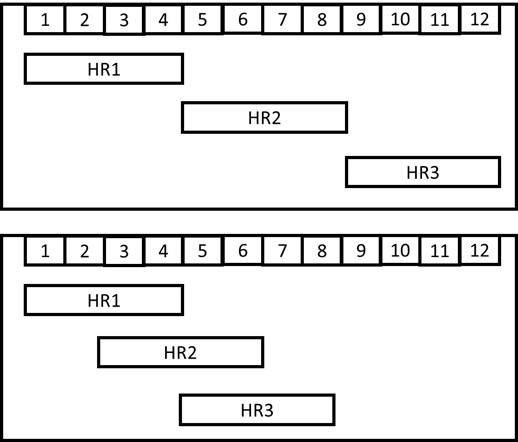Chapter 8. Resource Management
8.6 Schedule Compression Techniques
While resource leveling is mostly implemented during the planning stage of activities, schedule compression techniques such as crashing and fast-tracking are utilized during the execution of activities to accelerate the project. With crashing, the project manager adds additional resources to the critical activities (zero-slack activities) and saves time by spending more money on the additional resources. In this technique, existing resources can be asked to work overtime, or we can add new resources. As seen in Figure 8.6.1, we assigned new resources to the three activities. With the added resources, and accordingly, with more cost, we now had the opportunity to finish these activities in 8 days instead of 12 days.
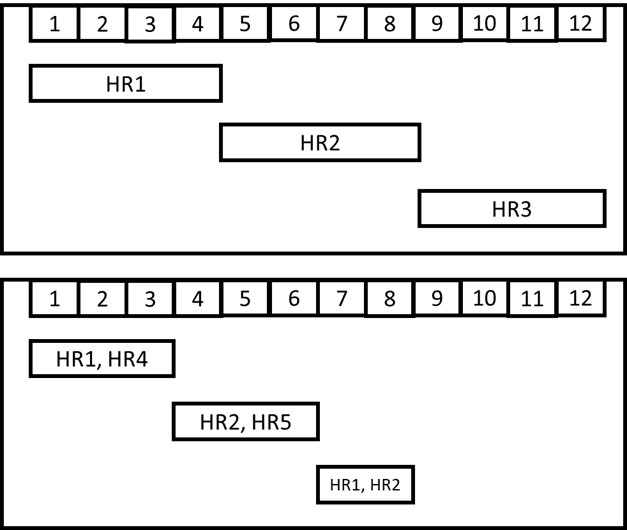
Project managers should ponder all the alternatives and outcomes before deciding to crash since adding new resources may not always shorten the duration. If overtime is approved, people who work overtime may be less productive after a while with increased tiredness and less satisfaction. Besides, there may be internal and external dependencies. For example, we may still be waiting for a material ordered from a supplier that cannot be delivered earlier. Regarding the equipment, we may be unable to increase the operating time if the equipment cannot work more than a certain number of hours a day. If the activities in which we crash resources are not critical, we cannot shorten the duration. Consider the project activity network diagram in Figure 7.4.14 from Chapter 7.
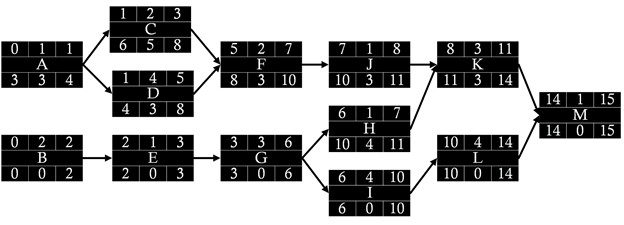
Let’s perform crashing in Activity D and Activity K. Each of D and K has a three-day slack. Let’s assume that with additional resources, we can finish D in 3 weeks instead of 4 weeks and K in 1 week instead of 3 weeks. The new activity network diagram is in Figure 8.6.3. The total duration of the project remains the same, 15 weeks. D and K have one more day of slack, which hasn’t influenced the duration of the project. Therefore, we have just paid more for nothing.
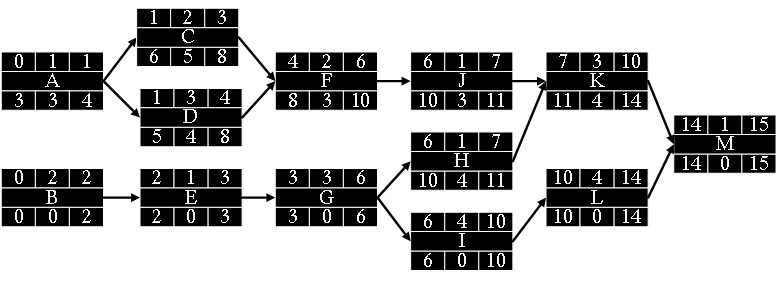
If we crash critical activities, we can save time on the project. Let’s add new resources to Activity I and Activity L. The new duration for I and L is 3 weeks for each. As seen in Figure 8.6.3, the total duration of the project was reduced to 13 days from 15 days.
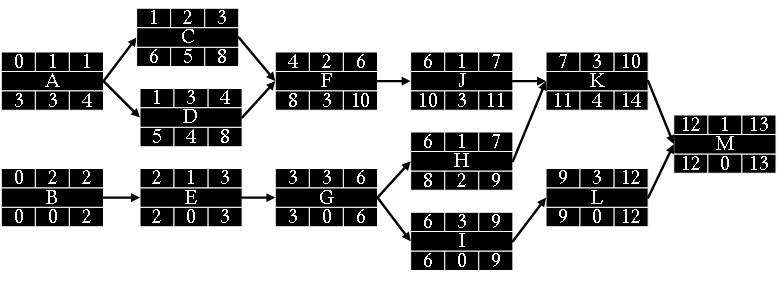
Another option to shorten the duration of a project is to implement fast-tracking. If some parts of the activities can be carried out in parallel, we can shorten the total duration. Let’s use the example in Figure 8.6.1. In fast-tracking, we don’t assign new resources. With the same resources, we can execute some parts of three activities in parallel. Let’s assume that the first activity is coding, and HR1 is working on this activity. The second activity is testing, and HR2 is working on this activity. We don’t need to wait for the first activity to be completed before starting the second activity. We can add two-day leads (negative lags) between activities (Figure 8.6.5). After developers finish some of the codings, testers can start the testing. In this case, we can finish three activities in 8 days instead of 12 days as seen in Figure 8.6.5. However, using leads increases the coordination efforts. Therefore, the project manager should exert more concentrated efforts to coordinate to prevent any quality risks. It may still be possible to increase the project costs, although the probability is less when compared with crashing. It is important to remember that not all activities can be fast-tracked. The sequencing of the activities should be such that fast-tracking is permissible.
